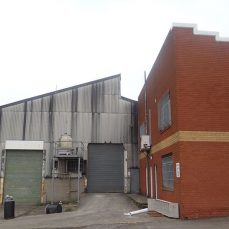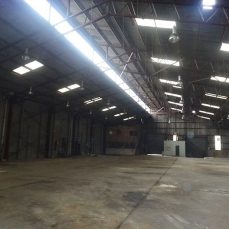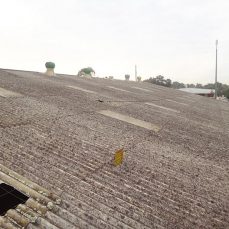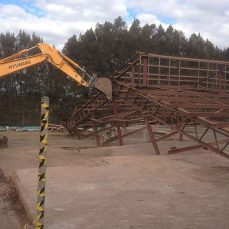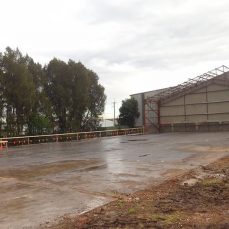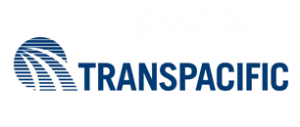



LEIGHTONFIELD SUBSTATION UPGRADE
Overview:
A 30-day demolition and asbestos removal project, undertaken at an industrial site in Leightonfield, New South Wales.
Overview:
Energy 2u Alliance and Silver Raven contracted ASP Australia to provide asbestos removal services and follow up demolition to a substation located near a functional railway corridor in Leightonfield, New South Wales.
ASP Australia was tasked with demolishing a free-standing, steel-columned and trussed structure, cladded with non-load bearing masonry walls, and an internal two-storey administration block within the structure. The structure was composed of external Super Six asbestos cement sheeting.
ASP Australia assigned a team of 8 demolition and asbestos removal staff to work alongside engineers on the project, utilising a wide range of heavy machinery and plant equipment, including a 30-tonne excavator, 50-tonne mobile crane, scissor lifts, boom lifts and two Bobcats.
As per engineer requirements, the existing structure’s rear masonry wall and entire first bay were to remain in-situ, later being braced to the common wall adjoining the neighbouring property, with the rest of the structure being demolished and removed from the premises.
ASP Australia induced a controlled collapse through the use of oxy-torches to cut through the steel supports, and ASP’s heavy machinery, which systematically broke down and removed the larger sections of the structure. As new asbestos containing material was exposed, our removal specialists ensured that it was stored safely within a restricted area on site before being transported away. In line with ASP’s recycling programme, the team was responsible for pre-processing any waste material for third-party concrete, steel, and green waste handlers.
The project saw the team face and overcome a number of challenges, including:
· Maintaining a safe working environment for personnel working at height as they removed the asbestos sheeting from the roof structure;
· Ensuring that dust and other airborne contaminants were prevented from coming into contact with neighbouring buildings and the general public by encasing the site with fencing and hoardings for the duration of the project; and
· Avoiding the ongoing risks associated with entering and exiting the site, pedestrian proximity, vehicles using the surrounding roads and heavy machinery use and movement within the site.
Remedial procedures were developed and implemented to counteract the risks associated with the large quantities of asbestos and other hazardous material being stored on site, along with those inherent in maintaining the site’s protective hoarding and scaffolding. Other risks that the team needed to overcome included the possibility of onsite collisions and potentially inexperienced contractors being present, all of which were avoided through effective planning, appropriate PPE and removal techniques as well as continuous direction from ASP’s site supervisors.
In total, the team was able to achieve a 90% recycling rate across the 521 tonnes of waste material created onsite, with the remaining 10% being transported to certified landfills.



